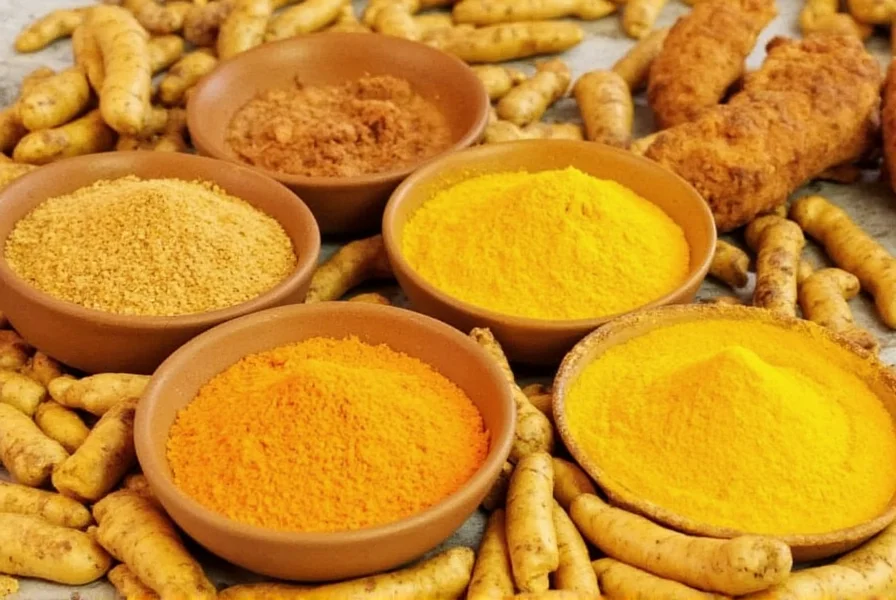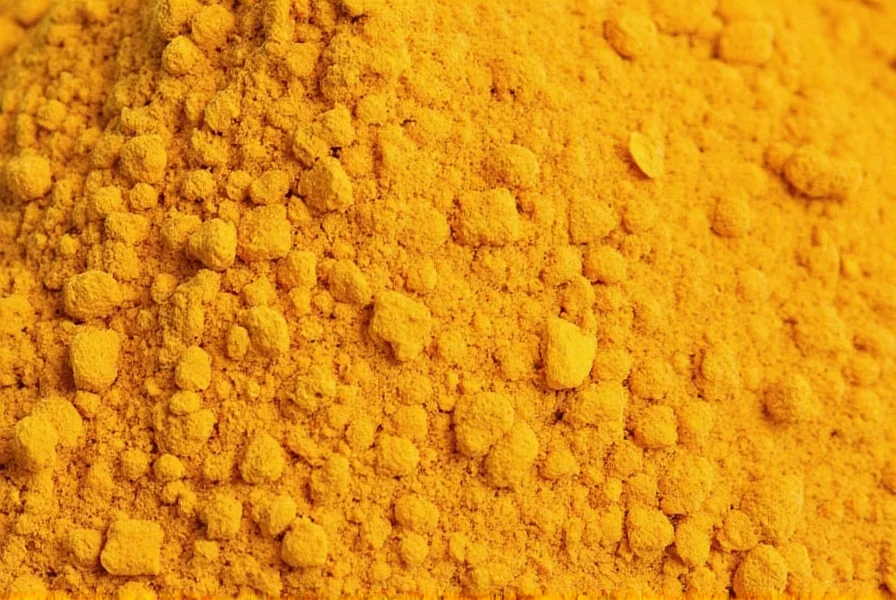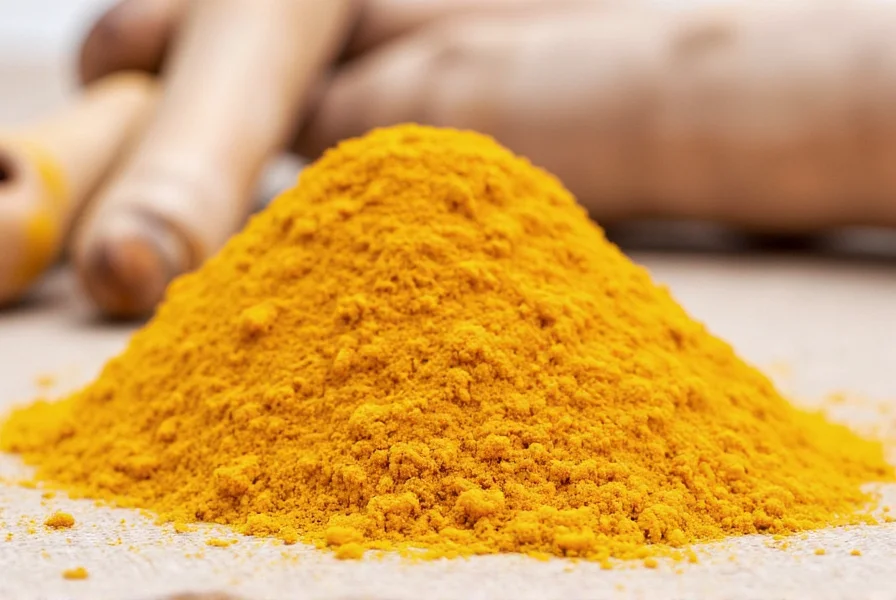Understanding the connection between haldi and turmeric is essential for anyone exploring natural wellness traditions or South Asian culinary practices. While Western scientific literature typically uses the term "turmeric," communities across India, Pakistan, and neighboring regions have called it "haldi" for centuries. This linguistic distinction represents a rich cultural heritage that continues to influence modern health discussions.
Botanical Identity and Historical Significance
Turmeric (Curcuma longa) belongs to the Zingiberaceae family, which also includes ginger. The plant grows up to three feet tall in tropical climates and produces rhizomes—the underground stems we know as turmeric root. Archaeological evidence suggests turmeric has been used in South Asia for over 4,000 years, with references appearing in ancient Sanskrit texts dating back to 500 BCE.
Traditional Ayurvedic practitioners classified haldi as having warming properties that balance kapha and vata doshas. In Hindu culture, brides traditionally applied haldi paste before weddings in a ceremony called the "haldi ceremony," believed to purify the skin and bring good fortune.
Chemical Composition and Bioactive Compounds
The golden pigment in haldi comes primarily from curcuminoids, with curcumin being the most studied compound. A typical turmeric rhizome contains:
| Compound | Percentage in Raw Turmeric | Key Properties |
|---|---|---|
| Curcumin | 2-8% | Anti-inflammatory, antioxidant |
| Demethoxycurcumin | 1-3% | Supports curcumin's effects |
| Bisdemethoxycurcumin | 0.5-2% | Enhances bioavailability |
| Turmerones | 0.3-1.5% | Neuroprotective properties |
Curcumin's poor bioavailability has been a significant research challenge. Modern studies often use piperine (from black pepper) or lipid-based delivery systems to enhance absorption, addressing what traditional practitioners intuitively understood by combining haldi with fats and black pepper in culinary preparations.
Traditional Uses in Ayurvedic Medicine
Ayurvedic texts describe haldi as having five of the six essential tastes (excluding salty), making it exceptionally versatile. Practitioners have historically used it for:
- Supporting digestive health through bile production stimulation
- Topical applications for wound healing and skin conditions
- Respiratory support in formulations for coughs and colds
- Joint health maintenance in formulations like yogaraja guggulu
- Women's health, particularly for menstrual regulation
The classical Ayurvedic text Charaka Samhita specifically mentions turmeric's role in treating wounds and skin disorders, while the Sushruta Samhita recommends it for balancing the doshas. Traditional preparations often combine haldi with other herbs to create synergistic effects—a practice increasingly validated by modern pharmacological research.
Modern Scientific Research on Health Benefits
Contemporary research has investigated many traditional claims about turmeric. High-quality systematic reviews suggest potential benefits in several areas:
Inflammation Management: Multiple studies indicate curcumin may help modulate inflammatory pathways. A 2020 meta-analysis published in Nutrients found curcumin supplementation significantly reduced markers of inflammation including C-reactive protein.
Joint Health: Research shows promising results for osteoarthritis management. A double-blind study in the Journal of Medicinal Food demonstrated that 1,000 mg of curcumin daily provided comparable relief to ibuprofen for knee osteoarthritis symptoms.
Digestive Support: Evidence suggests turmeric may support healthy digestion by stimulating bile production. However, those with gallstones should consult healthcare providers before increasing turmeric intake.
It's important to note that while research is promising, most studies use concentrated curcumin extracts rather than culinary amounts of turmeric. The spice in your kitchen cabinet provides benefits but shouldn't be considered equivalent to therapeutic doses used in clinical trials.
Culinary Applications and Bioavailability Enhancement
Traditional South Asian cooking methods naturally address turmeric's bioavailability challenges. Common practices include:
- Combining haldi with black pepper (piperine increases curcumin absorption by up to 2,000%)
- Cooking with healthy fats like ghee or coconut oil (curcumin is fat-soluble)
- Heating turmeric (moderate heat increases curcuminoid solubility)
A classic preparation is "golden milk" (haldi doodh), which combines turmeric with warm milk, black pepper, and sometimes ginger. Modern adaptations often use plant-based milks and additional spices like cinnamon for complementary benefits.

Safety Considerations and Practical Usage
Turmeric is generally recognized as safe when consumed in food amounts. However, certain considerations apply:
- Dosage: Culinary use typically involves 1-3 grams of turmeric powder daily. Therapeutic supplements often provide 500-2,000 mg of curcumin extracts.
- Medication Interactions: Turmeric may interact with blood thinners and diabetes medications. Consult your healthcare provider if taking these medications.
- Pregnancy: Culinary amounts are generally safe during pregnancy, but therapeutic doses should be avoided without medical supervision.
- Staining: Turmeric's potent color can stain clothing and surfaces—handle with care when preparing.
For maximum benefit in daily cooking, add turmeric toward the beginning of the cooking process to allow heat activation, but avoid prolonged high-heat exposure which can degrade curcuminoids. Combining with black pepper and healthy fats remains the most effective traditional method for enhancing absorption.
Integrating Haldi into Modern Wellness Practices
The convergence of traditional knowledge and modern science creates exciting opportunities for incorporating haldi into contemporary wellness routines. Rather than viewing it as a miracle cure, consider turmeric as one component of a holistic approach to health.
When selecting turmeric products, look for those that specify curcumin content or include absorption-enhancing components. For culinary use, fresh turmeric root offers more complex flavor than dried powder, though powder provides more concentrated curcumin.

Conclusion: Bridging Tradition and Science
Haldi and turmeric represent a remarkable intersection of ancient wisdom and modern scientific inquiry. While traditional Ayurvedic practices have utilized this golden spice for millennia, contemporary research continues to validate many of its purported benefits. The key to maximizing turmeric's potential lies in understanding both its traditional preparation methods and the scientific principles behind its bioactive compounds.
By incorporating haldi into your diet using time-honored techniques—combining it with black pepper and healthy fats—you can optimize its benefits while honoring the cultural heritage that has preserved this knowledge across generations. As with any natural compound, moderation and informed usage remain essential for safe and effective integration into your wellness routine.
Is haldi the same as turmeric?
Yes, haldi is the Hindi and Urdu word for turmeric. Both terms refer to the exact same plant (Curcuma longa) and its rhizomes. The difference is purely linguistic—"turmeric" is the English term derived from Latin, while "haldi" comes from Sanskrit through Hindi and Urdu.
What's the best way to absorb turmeric's benefits?
To maximize absorption of curcumin (turmeric's active compound), combine it with black pepper (which contains piperine) and a healthy fat. Traditional preparations like golden milk follow this principle. Heating turmeric moderately also increases solubility. Most commercial supplements include piperine or use lipid-based delivery systems for enhanced bioavailability.
Can I use regular kitchen turmeric for health benefits?
Yes, culinary turmeric provides health benefits, though in smaller amounts than therapeutic supplements. A typical curry might contain 1-3 grams of turmeric, delivering about 20-80 mg of curcumin. For specific health concerns, higher doses from supplements may be necessary, but regular culinary use contributes to overall wellness as part of a balanced diet.
Are there any side effects of consuming too much haldi?
Excessive turmeric consumption (more than 8 grams daily) may cause digestive discomfort in some people. Those with gallstones should consult a healthcare provider before increasing intake, as turmeric stimulates bile production. Turmeric may interact with blood thinners and diabetes medications, so consult your doctor if taking these medications regularly.
How does traditional Ayurvedic use of haldi differ from modern supplement approaches?
Traditional Ayurvedic practice uses whole turmeric in combination with other herbs and specific preparation methods, emphasizing the synergistic effects of the complete plant. Modern supplements often isolate curcumin, the most studied compound. While supplements provide higher concentrations of curcumin, traditional preparations leverage the full spectrum of turmeric's compounds working together, which some researchers believe creates more balanced effects.











 浙公网安备
33010002000092号
浙公网安备
33010002000092号 浙B2-20120091-4
浙B2-20120091-4